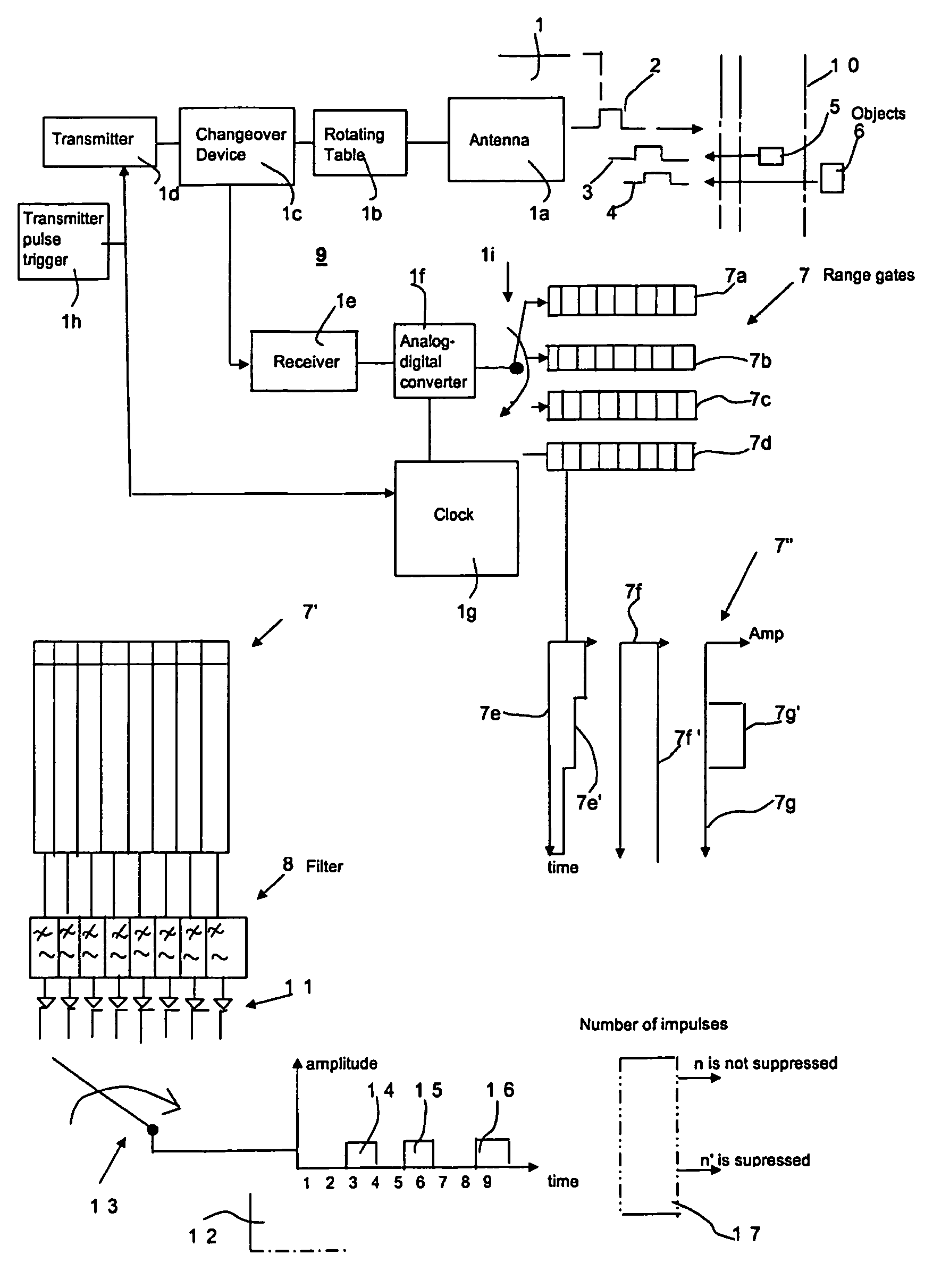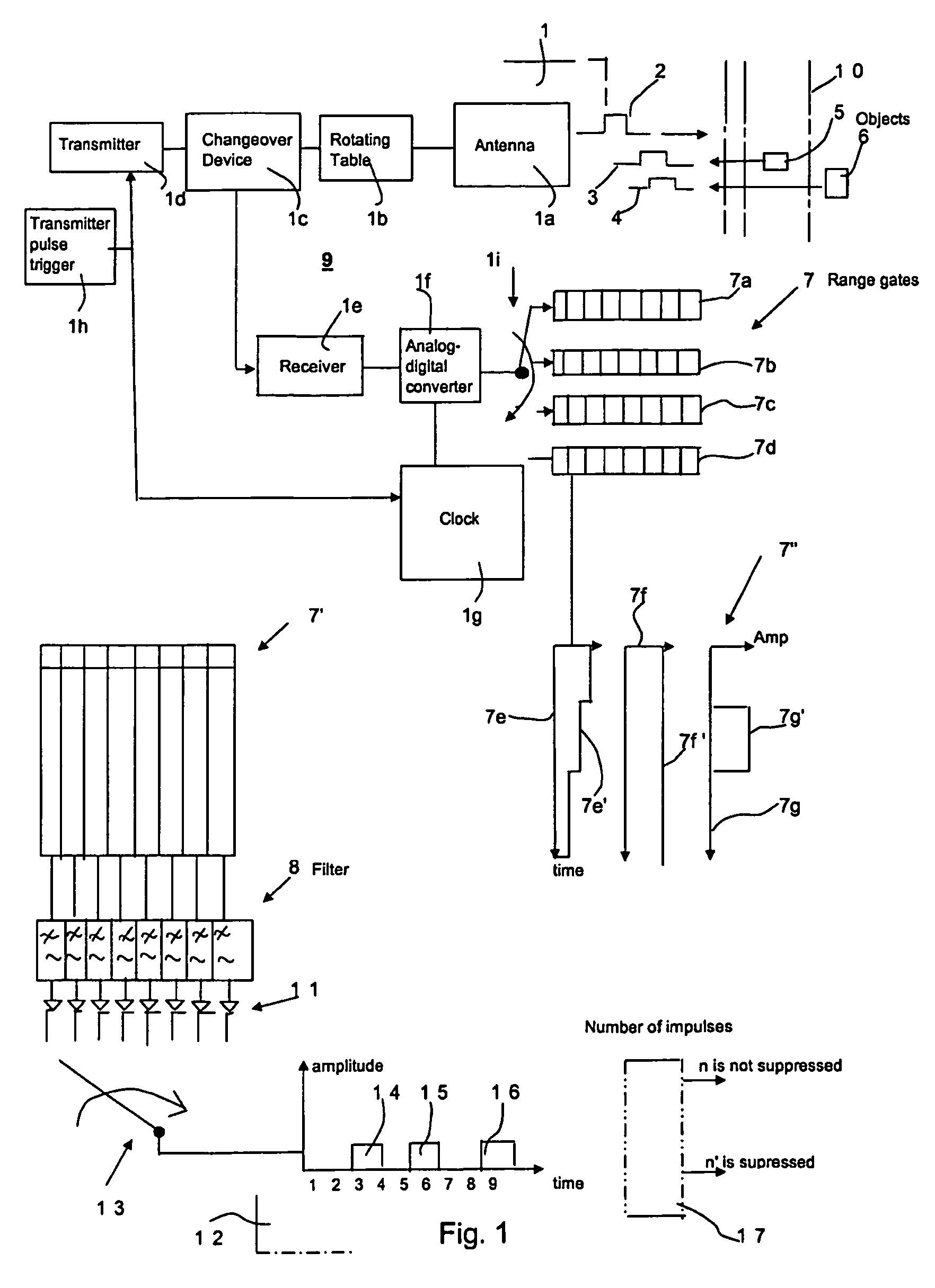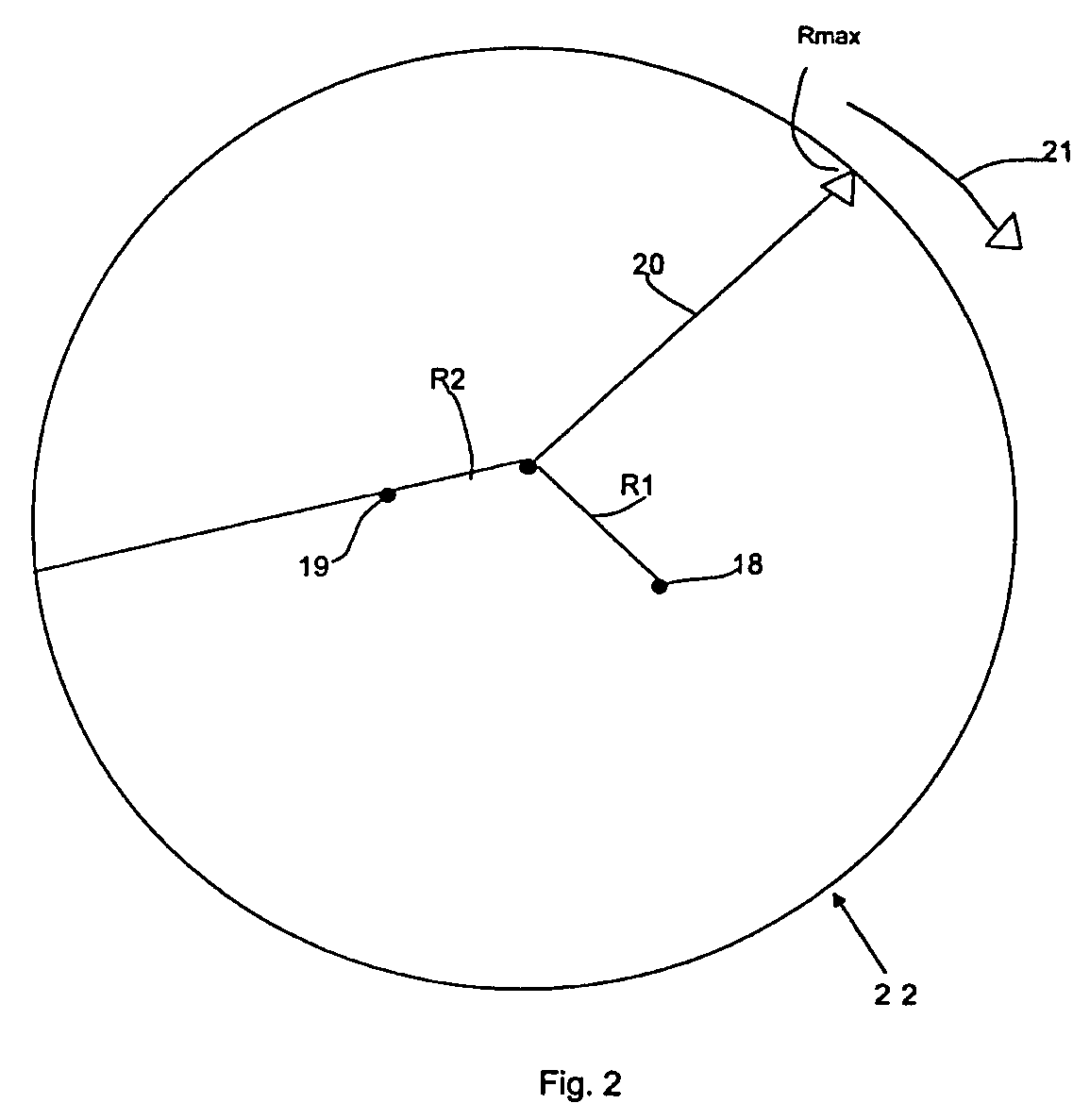Apparatus for radar
- Summary
- Abstract
- Description
- Claims
- Application Information
AI Technical Summary
Benefits of technology
Problems solved by technology
Method used
Image
Examples
Embodiment Construction
[0018]FIG. 1 shows a radar illustrated symbolically by 1. The radar is arranged to transmit electromagnetic energy or pulses 2 in pulse repetition intervals PRI and to receive reflections or echoes 3, 4 from objects 5, 6 that reflect the electromagnetic energy. The radar is arranged with range gates that are indicated in outline by 7, 7′, 7″. The respective range gates are provided with or interact with a Doppler filter or high pass filter 8. The radar works with a frequency that varies in accordance with a staggered or wobbling pattern. The functions achieved by the radar 1 are symbolized in outline by 9. The radar comprises an antenna 1a that is arranged to be able to rotate, with a rotating table 1b. A changeover device 1c connects the rotation table / antenna in turn to a transmitter 1d and a receiver 1e. The receiver 1e is connected to an analog-digital converter 1f. A clock is indicated by 1g and controls the transmitter and receiver circuits with a frequency related to the tran...
PUM
 Login to View More
Login to View More Abstract
Description
Claims
Application Information
 Login to View More
Login to View More - R&D
- Intellectual Property
- Life Sciences
- Materials
- Tech Scout
- Unparalleled Data Quality
- Higher Quality Content
- 60% Fewer Hallucinations
Browse by: Latest US Patents, China's latest patents, Technical Efficacy Thesaurus, Application Domain, Technology Topic, Popular Technical Reports.
© 2025 PatSnap. All rights reserved.Legal|Privacy policy|Modern Slavery Act Transparency Statement|Sitemap|About US| Contact US: help@patsnap.com



